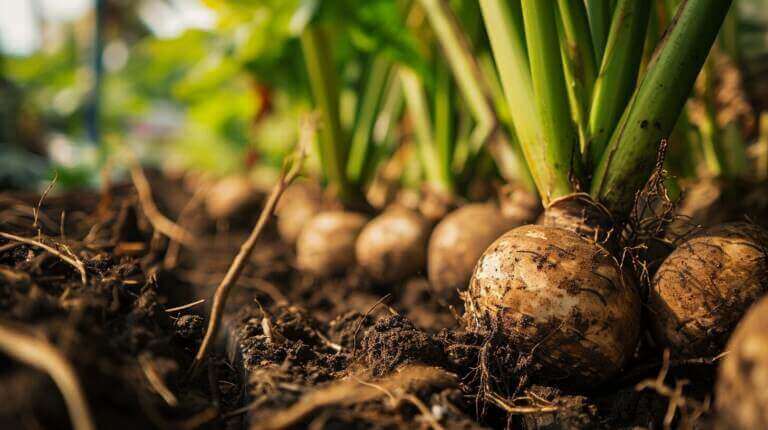The Swiss cheese plant, also known as Monstera adansonii, is a tropical perennial native to Central and South America. It is commonly grown as an indoor houseplant and is loved for its large, heart-shaped leaves that develop holes as the plant ages. Repotting Swiss cheese plants is essential for optimal growth and maintaining a healthy plant.
When repotting, it’s important to choose a slightly larger container with good drainage and use a peat-based potting mix to provide the plant with the right moisture balance. Repotting should be done every two years or when the roots start poking out of the drainage holes. Additionally, proper light, humidity, and regular watering are important for the overall care and growth of Swiss cheese plants.
Key Takeaways:
- Repotting Swiss cheese plants is crucial for optimal growth and maintaining a healthy plant.
- Choose a slightly larger container with good drainage when repotting.
- Use a peat-based potting mix to provide the plant with the right moisture balance.
- Repot every two years or when roots start poking out of the drainage holes.
- Proper light, humidity, and regular watering are important for the overall care and growth of Swiss cheese plants.
When to Repot Swiss Cheese Plants
Knowing when to repot your Swiss cheese plant is crucial for its growth and overall health. By understanding the signs that indicate the need for repotting and following a regular repotting schedule, you can ensure that your plant thrives in its new container.
One of the main signs that your Swiss cheese plant needs repotting is when the roots start poking out of the drainage holes or circling around the edges of the pot. This indicates that the plant has outgrown its current container and requires more space for its roots to grow. Additionally, if the potting soil dries out quickly or the plant is not growing at a normal rate, it may be a sign that repotting is needed.
It is generally recommended to repot Swiss cheese plants every two years, or as needed. However, it’s important to take into account the growth rate of your specific plant and adjust the repotting schedule accordingly. Repotting during late winter or early spring, when the plant is still dormant, is ideal as it allows the plant to recover and establish itself in its new container before the growing season begins.
https://www.youtube.com/watch?v=afhJxg1avH4
By being attentive to the signs and following a repotting schedule, you can ensure that your Swiss cheese plant has enough room for its roots to grow and continues to thrive in its new container.
How to Repot Swiss Cheese Plants
When it comes to repotting your beloved Swiss cheese plant, following the right steps is essential for a successful process. Here, I’ll guide you through the repotting process, from start to finish.
To begin, select a container that is slightly larger than the current pot. It’s important to choose a container with good drainage holes to ensure proper water flow. This allows the plant’s roots to thrive and prevents waterlogging that can lead to root rot.
Next, prepare the new pot by filling the base with fresh potting mix. Ideally, opt for a peat-based mix or a mix specifically formulated for aroids. These mixes provide the right balance of moisture retention and drainage, promoting healthy growth.
Now, gently remove the Swiss cheese plant from its current container, taking care not to damage the delicate roots. Untangle any tangled roots and trim off any damaged or dead ones. This step promotes proper root development and allows the plant to establish itself in its new home.
Place the plant in the new pot and fill the remaining space with fresh potting mix. Be sure to maintain the same level as it was in the previous pot to avoid burying the stem too deep. Once your plant is securely potted, water it thoroughly to help settle the soil and hydrate the roots.
Remember to monitor your newly repotted Swiss cheese plant for signs of growth and adjust its care accordingly. With the right repotting process and continued care, your Monstera adansonii will thrive and continue to bring beauty to your indoor space.
FAQ
When is the best time to repot a Swiss cheese plant?
It is recommended to repot Swiss cheese plants in late winter or early spring when the plant is still dormant.
What are the signs that my Swiss cheese plant needs repotting?
Signs that your plant needs repotting include roots poking out of the drainage holes, roots circling around the edges of the pot, quick drying of the potting soil, or slow growth.
What kind of potting mix should I use when repotting my Swiss cheese plant?
It is best to use a peat-based potting mix or a mix specifically made for aroids when repotting your Swiss cheese plant.
How often should I repot my Swiss cheese plant?
Repotting should be done every two years or as needed when the roots start poking out of the drainage holes or the plant becomes rootbound.
How do I repot my Swiss cheese plant?
To repot your Swiss cheese plant, choose a slightly larger container with good drainage, fill the base with fresh potting mix, carefully remove the plant from its current container, untangle the roots, trim any damaged or dead roots, place the plant in the new pot, add fresh potting mix, and water thoroughly.







